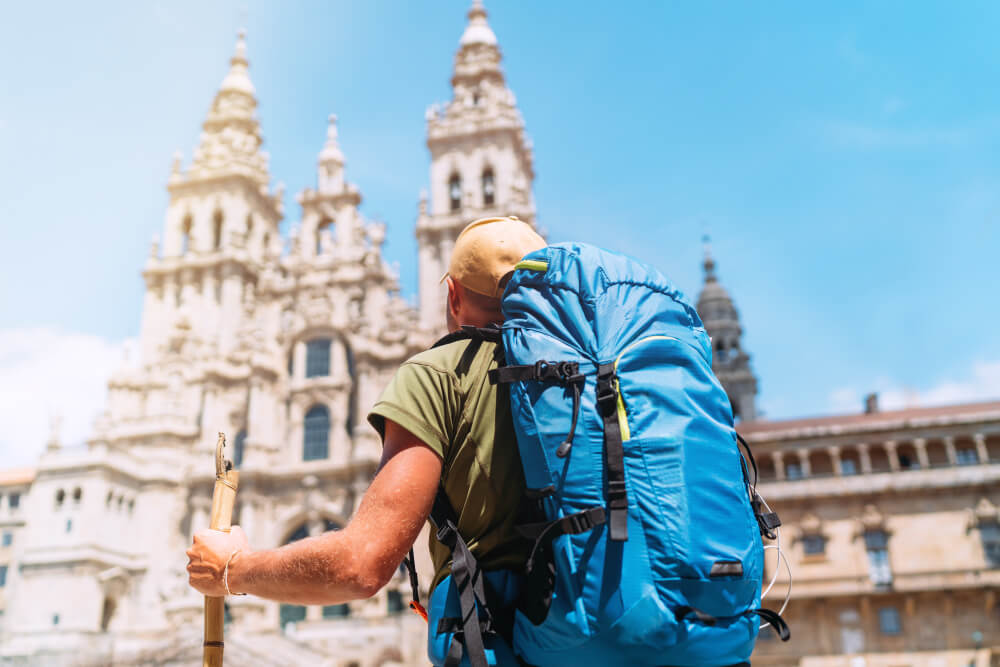Anyone who has ever participated in a pilgrimage knows that this is something special, but they may not know what communitas are, walking with strangers and sharing a goal with them leads us to create special links, a destiny, a shared path and an unexpected affinity builds magic.
This phenomenon was studied by the anthropologist Victor Turner, who regarded pilgrimages as rituals divided into different phases, for him pilgrimages consist of leaving society and returning, but on the way back nothing is the same as before. For Turner, the most important thing was the community that had formed, the relationships so special that he called communitas.
- The rituals consist of three different and interconnected phases.
- Which are separation.
- Liminality and aggregation; in the first phase.
- That of separation.
- People separate from the social community.
- Abandon daily life.
- Both physically and symbolically.
On pilgrimages, this phase occurs when we pack, say goodbye and look for information about the experience that begins, etc.
The second phase, that of limnality, is the realization of travel, pilgrimage, at this stage people move away from normal notions of time and space, time passes otherwise. People constantly stop looking at the clock, walk slower taking advantage of the landscape, and the timing becomes more important than the future.
During this phase, a common motif is also shared with other pilgrims, to complete the pilgrimage or to reach the next point of the journey, which creates a common identity.
The last phase is aggregation. It is the end of the pilgrimage, it is time to return home, to the usual routine, the road is over. However, nothing else is the same. Pilgrims tend to return to calm and gain a new social status. Routine and tedious activities are perceived differently. Small things become more important and relationships with others become more enjoyable. What happened?
Of the three phases of rituals, the second, limnality, is the most central, the most important, during this phase something that happens makes us change, something changes the way we see and understand the world, it is the communitas.
In the preliminary phase there are no prior social conditions, the rules and limitations that we have on a daily basis are disappearing and we have more freedom, our social status no longer matters No matter what we do, our studies or our religious beliefs, all pilgrims are at the same level, they are the same.
“Walking is a way to enjoy modernity, a shortcut to the frantic pace of our lives and a way to sharpen the senses. “- David Le Breton-
This anarchic state gives rise to the communitas. The communitas, according to Turner, is a spirit of community, it is a sense of social equality, solidarity and unity, in any case, it is a human bond formed by non-rational equal bonds, other pilgrims become our equals for us. For no reason.
Even if in other situations they have never become our friends, they become more than friends. No matter what we share, it’s not out of this precious moment of the present.
The communitas are very intense. This leads us to make our senses more sensitive and our intuition more active, emotions run out and the rational loses its meaning, however this condition is temporary and does not usually last long.
In addition, communitas can be used to destroy the order. This state in which the usual social norms do not work can lead us to a chaotic state in which destruction reigns, conversely, communitas can also lead us to creation, this state can act as an aid to generate new standards and values, as well as helping us recover lost values.
Turner distinguishes three different types of communitas: existential or spontaneous communitas, regulatory communitas, and ideological communitas.
Spontaneous communitas occur when a countercultural event occurs, when participating in an event whose standards are contrary to current culture, regulatory communications occur when there is a need for social control, this type of communitas comes from spontaneous communitas and pilgrimages. belong to this guy. Finally, it is the ideological community found in utopian societies. People share certain ideals, a utopia.
While spontaneous communitas occur outside social norms, the social, normative and ideological structure is part of the social structure, so spontaneous is the freer, the one that brings the most changes.
In short, voluntarily leaving the place of residence, crossing new borders and crossing never-before-known states leads us to the communitas, something that overcomes the division between people and leads to social unification. If you’ve had such an experience, you know what to call it. If on the contrary you haven’t tried it yet, what are you waiting for?

